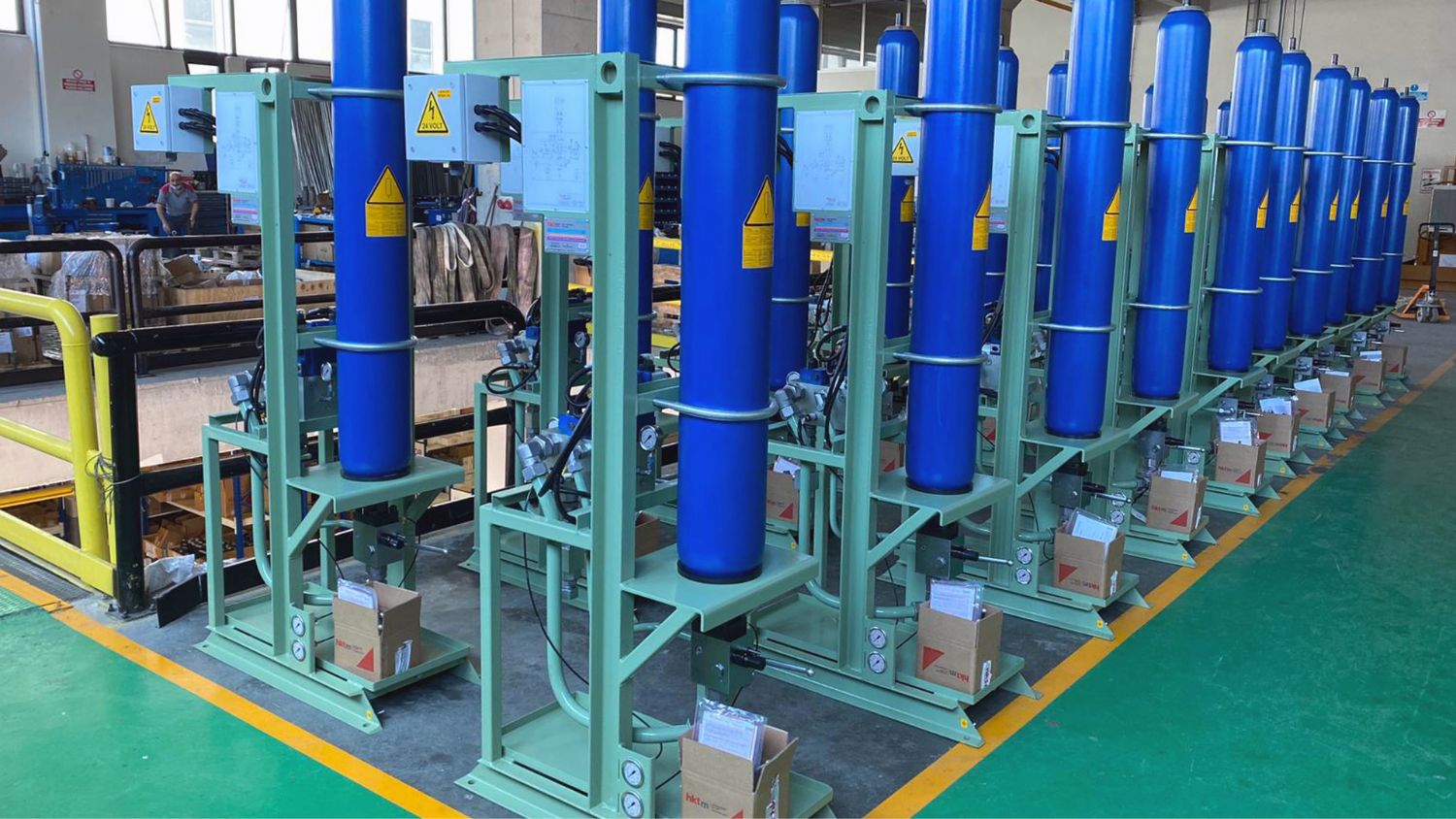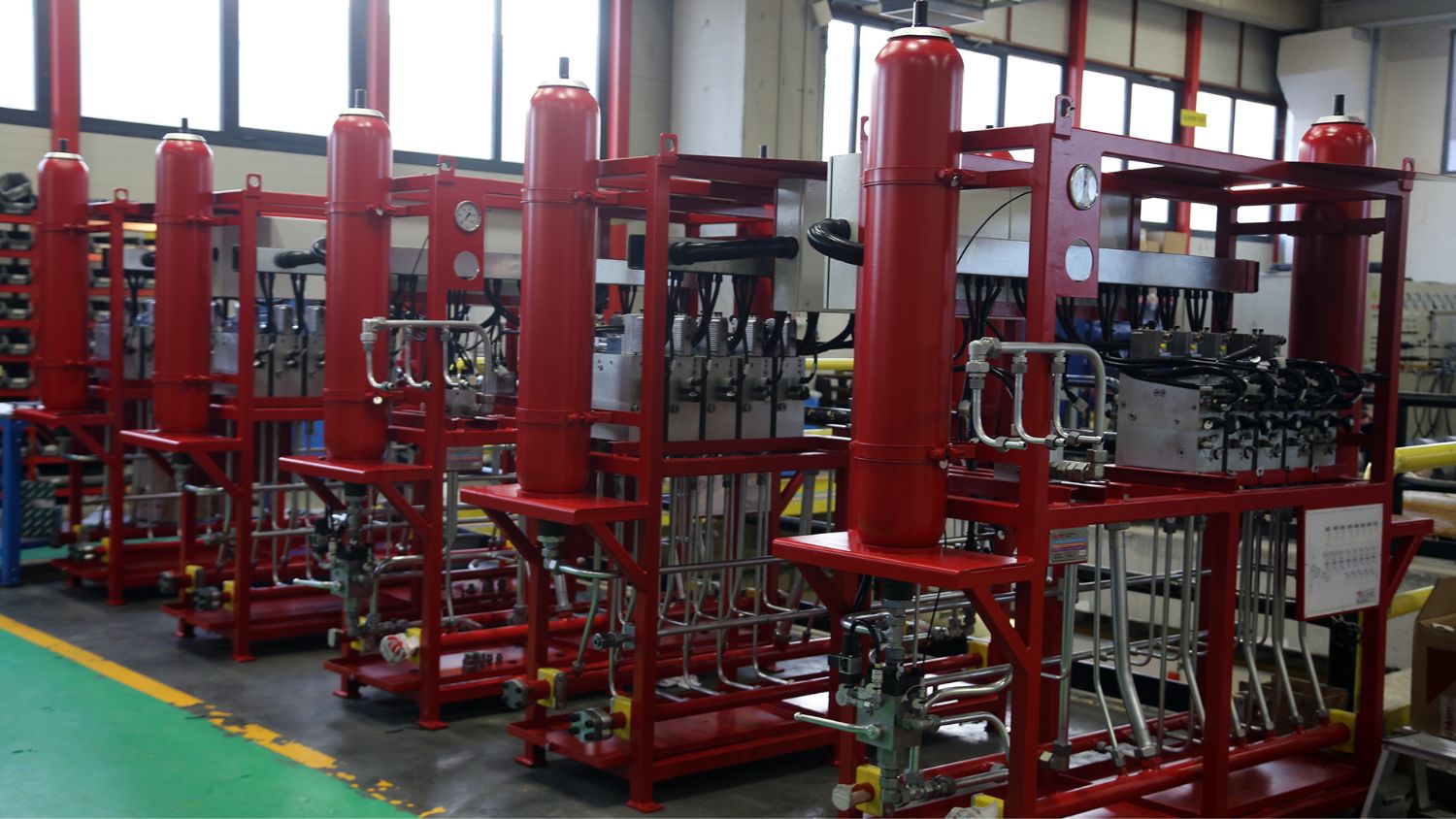Hydraulic Accumulator Stands
Hydraulic Accumulator Stands
Hydraulic accumulator is the circuit element of the hydraulic systems that collect the pressure and release such pressure into the system rapidly when needed. Hydraulic Accumulators come in 3 varieties. They have different structures and volumes but their function remains the same.
Bladder Accumulators:
The bladder accumulators store hydraulic oil and nitrogen gas in its reservoir by taking advantage of the expansion of the flexible bladder inside. As the pressurized hydraulic fluid reaches the accumulator inlet, the flexible bladder expands and nitrogen gas is compressed. Pressurized liquid is stored in the accumulator.
Due to the decrease in the pressure in front of the liquid stored in the accumulator and the decrease in the system pressure, the nitrogen pressure pushes the hydraulic liquid in the accumulator towards the system, enabling it to be activated.
Diaphragm Accumulators:
The diaphragm accumulators have a flexible membrane in its internal structure that separates the liquid and gas from each other. A metal clamping ring holds the membrane in place. This metal clamping and its other features enable the diaphragm accumulators to function without maintenance for a long time. They are widely preferred in low and continuous fluid needs.
Piston Accumulators:
In the piston accumulators, a piston separates the gas and fluid chambers. Piston accumulators consist of a liquid chamber, a nitrogen chamber and the piston separating these chambers from each other.


